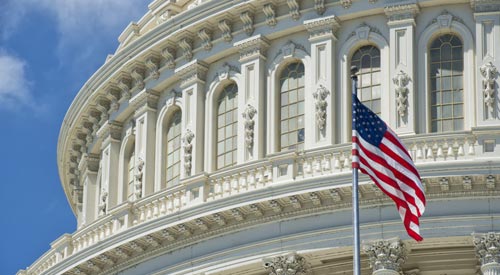-
Business
-

Policy & Business
-
-
Federal IT
-

Information Technology
-
-
State & Local
-

State & Local Government
-
-
Defense
-

Defense & Intelligence
-
-
Healthcare
-

Healthcare Policy & IT
-
-
Energy
-

Energy Policy & Technology
-
-
Education
-

Education Policy & Technology
-
Stay In or Leave the Paris Climate Deal? Lessons From Kyoto
The New York Times: WASHINGTON — The architects of the Paris climate accord deliberately designed it to be supple, adaptable to the differing political and economic environments of the nearly 200 countries that signed it. The authors were mindful of its predecessor, the Kyoto Protocol, which was roundly rejected by the United States because it set binding emissions targets for wealthy countries while letting most developing nations, including China, off the hook.
But now, as forces within the Trump administration continue to debate whether to leave the Paris agreement, they face a far different calculus. The accord, agreed to in 2015, is largely nonbinding, imposing no serious legal restraints on the United States or any other nation. While that makes the treaty a less rigorous plan to fight global warming, it also means there are few compelling reasons to exit.
Tags
Top Stories
- Energy Department wants national labs to drive regional innovation
- How solar surge saved Europe from the energy crisis
- Study: Puerto Rico should go solar to meet clean energy goal
- The Federal Government Can Use Its Buying Power to Help the Environment and Save Taxpayers Money
- EVs, Building Emissions Among Biden’s Sustainable Energy Priorities
- Deploying Clean Energy Tech Depends on Cost Efficiency, Officials Say
- National Labs to Receive $1.5B Funding Boost
- Solar, telecom rollouts offer lessons for mass EV charging station deployments
- EPA to strengthen proposed rule on methane emissions from oil, gas
- Getting to ‘Net-zero’ Emissions: How Energy Leaders Envision Countering Climate Change in the Future
- Tech Wanted: Government Calls on Industry to Help with Net-Zero Carbon Buildings
- EPA Calls Out Environmental Racism in Louisiana’s Cancer Alley
- Hawaii to U.S. Navy: Quit Polluting Our Waters
- Climate-Based Trainings and Performance Plans Are Coming for Federal Employees
- Infrastructure permitting reform plan blocked in Senate
- Hydro-Québec’s radical but careful digital transformation could be a model for utilities everywhere
i360Gov Newsletters
The most significant government policy, business, and technology news and analysis delivered to your inbox.
Subscribe NowTrending
- Solar, telecom rollouts offer lessons for mass EV charging station deployments
- Tech Wanted: Government Calls on Industry to Help with Net-Zero Carbon Buildings
- Energy Asks for New R&D in Critical Materials for Clean Energy
- Hydro-Québec’s radical but careful digital transformation could be a model for utilities everywhere
- California sets ‘ambitious’ offshore wind goal of up to 5 GW by 2030
- TSA revises cyber rules for pipelines
- Energy Awards Over $540 Million for Green Tech Research
- National Labs to Receive $1.5B Funding Boost
Also in Energy Policy & Technology
About
i360Gov is an intelligent network of websites and e-newsletters that provides government business, policy and technology leaders with a single destination for the most important news and analysis regarding their agency strategies and initiatives.
Contact Us
Telephone: 202.760.2280
Toll Free: 855.i360.Gov
Fax: 202.697.5045











